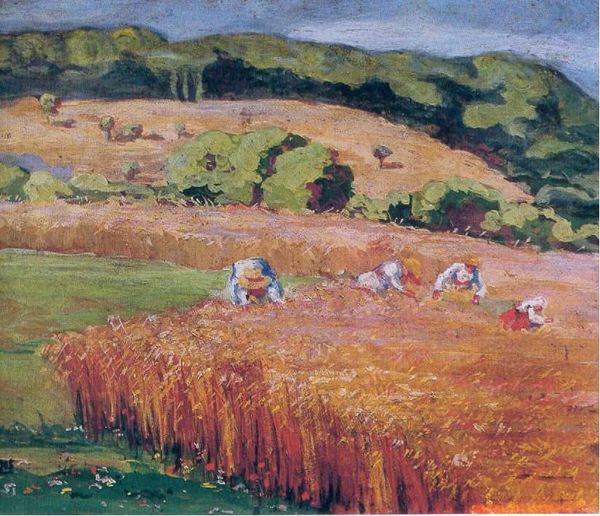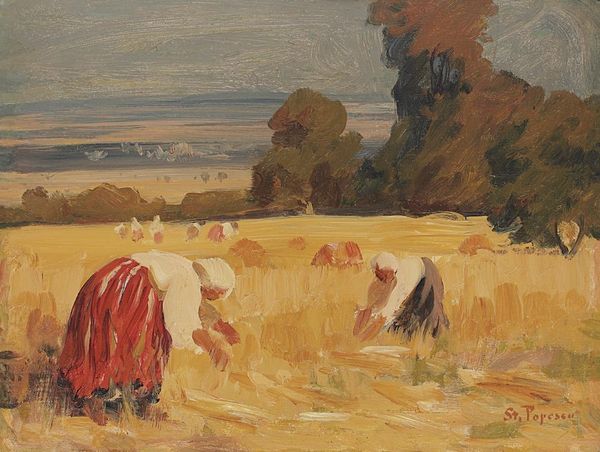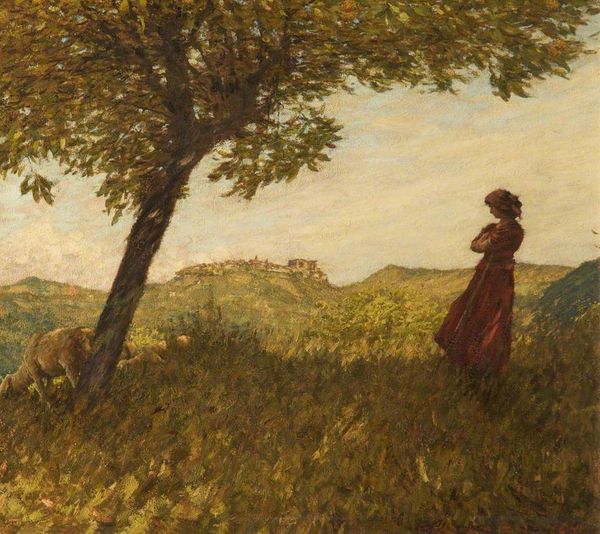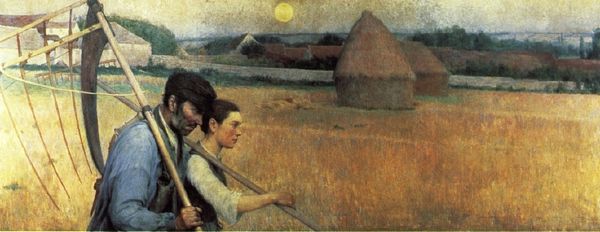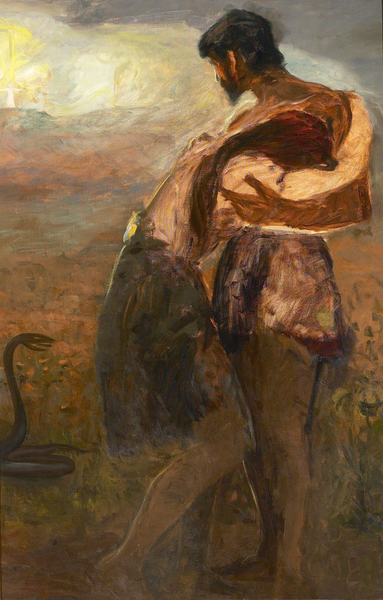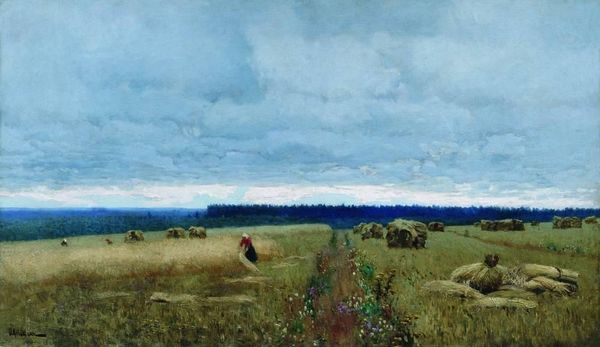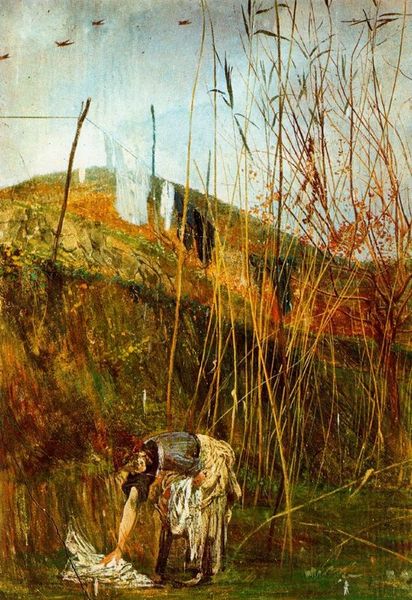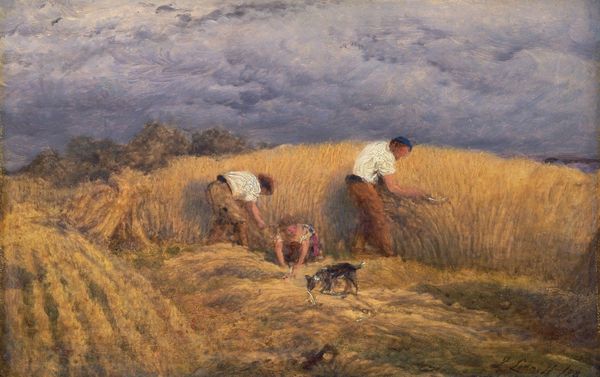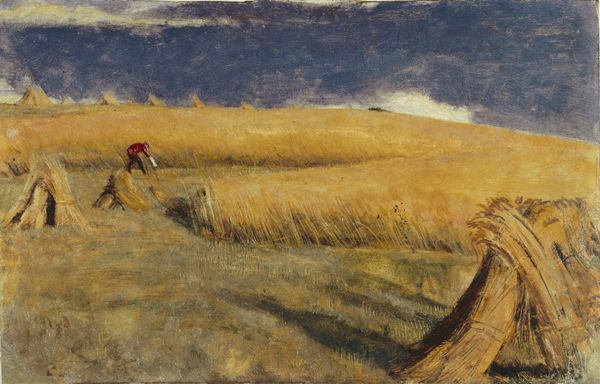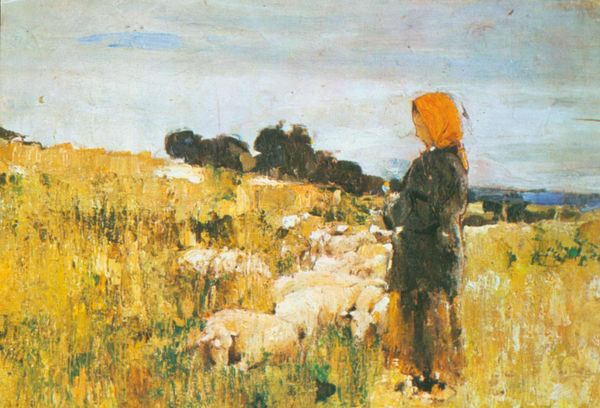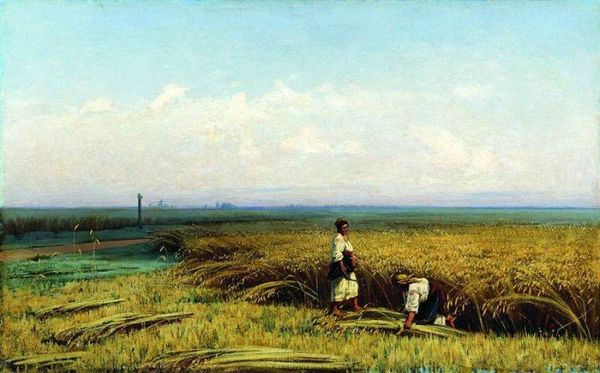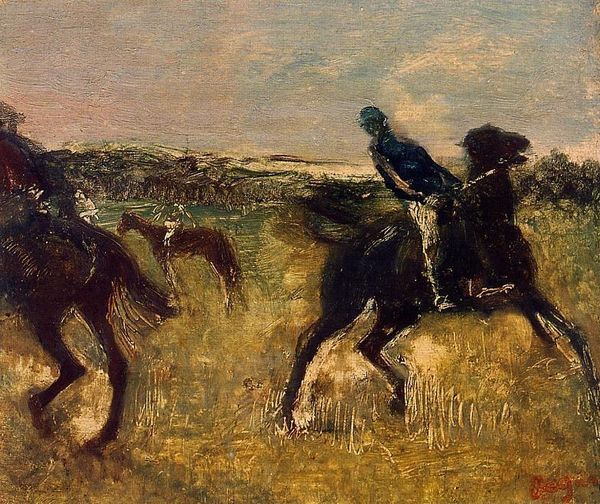
Dimensions: unconfirmed: 130 x 349 mm frame: 219 x 434 x 50 mm
Copyright: CC-BY-NC-ND 4.0 DEED, Photo: Tate
Editor: Here we have "Children at Lunch by a Corn Stook" by Peter De Wint. I find the loose brushwork creates a very tranquil scene. What do you see in the composition that stands out? Curator: Observe how De Wint orchestrates the horizontal bands of the field against the verticality of the corn stooks. Note the children, carefully positioned in the foreground as both subjects and compositional elements. Editor: So, their placement is as much about the overall structure as it is about portraying a scene? Curator: Precisely. Consider also the interplay of light and shadow, creating depth and rhythm. The artist manipulates visual elements to produce a coherent and engaging whole. Editor: I see it now. It’s a lesson in how formal elements shape our perception. Curator: Indeed, appreciating the structural integrity offers a richer viewing experience.
Comments
tate 8 months ago
⋮
http://www.tate.org.uk/art/artworks/de-wint-children-at-lunch-by-a-corn-stook-t07099
Join the conversation
Join millions of artists and users on Artera today and experience the ultimate creative platform.
tate 8 months ago
⋮
De Wint's output, both as a watercolourist and as a painter in oils, was dominated by scenes of haymaking and other agricultural activities dominated. A number of landscape artists turned to agricultural themes in the period 1807-1815. The wars against France (1793-1815) did much to stimulate contemporary interest in agriculture, which was seen as a vital part of the war effort. It was also a time of intensive agricultural development in England, when open fields and commons were being rapidly enclosed. Children worked in the fields from the age of nine or ten, or even younger. Gallery label, September 2004
